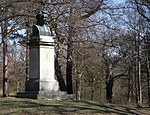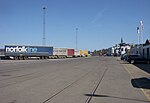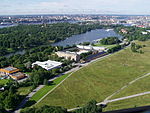Waldemarsudde
Art Nouveau architecture in StockholmArt Nouveau housesArt museums and galleries in StockholmBuildings and structures in StockholmDjurgården ... and 3 more
Historic house museums in SwedenHouses completed in 1904Royal residences in Sweden
Prins Eugens Waldemarsudde (Swedish for Cape Waldemar), is a museum located on Djurgården in central Stockholm. The name is composed of Waldemar, an Old German noble male name, and udde, meaning cape. It is derived from a historical name of the island Djurgården, Valmundsö (see History of Djurgården.)
Excerpt from the Wikipedia article Waldemarsudde (License: CC BY-SA 3.0, Authors).Waldemarsudde
Ryssviksvägen, Stockholm Djurgården (Östermalms stadsdelsområde)
Geographical coordinates (GPS) Address Nearby Places Show on map
Geographical coordinates (GPS)
| Latitude | Longitude |
|---|---|
| N 59.32 ° | E 18.113055555556 ° |
Address
Gamla huset
Ryssviksvägen
115 21 Stockholm, Djurgården (Östermalms stadsdelsområde)
Sweden
Open on Google Maps











